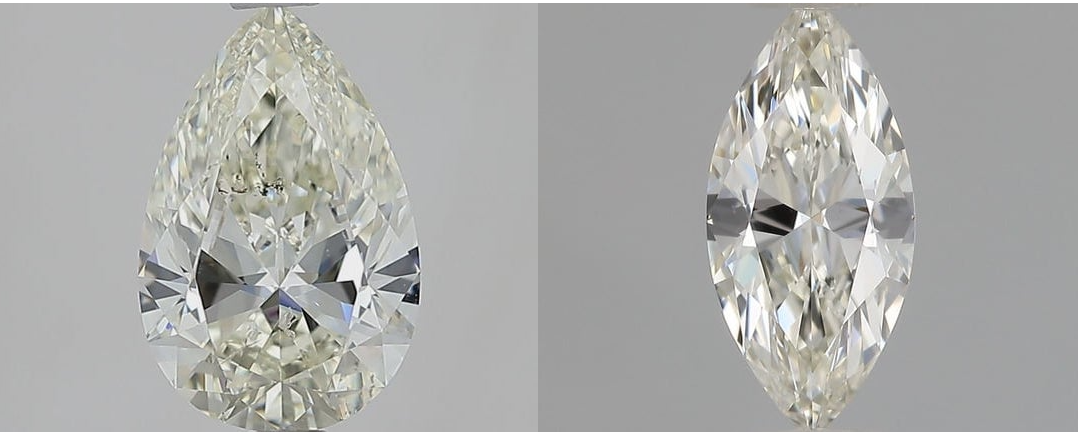What Is a Bow Tie in an Oval Diamond?

What’s not to love about the oval-cut diamond? This sparkly shape creates a graceful effect and flatters every finger. However, those who are shopping for an oval-cut diamond should be aware of the bowtie effect.
The bowtie effect isn’t exclusive to just oval-cut diamonds – other elongated shapes such as the pear-cut and marquise-cut can also exhibit bow ties.

Above: a pear-cut and marquise-cut diamond exhibiting the bow tie effect.
Diamonds with a bow tie have dark connected triangles at the center of the diamond that forms a bow tie-like shape. Prominent bow ties are undesirable as they can hinder the beauty and sparkle of a diamond.

Bow ties are not an inclusion - they are simply a visual characteristic that happens in elongated fancy shapes.
What Causes the Bow Tie Effect?
Light blockage is what causes the bow-tie effect. Because of this, the bowtie may or may not be visible at certain angles - for example, if you closely examine an oval-cut ring and your head is blocking the light, you may see the bow tie. The bow tie in a diamond is basically a shadow within the diamond. The longer facets in elongated shapes like the oval-cut can make it harder for light to be adequately dispersed.

Another factor that causes the bow tie is poor cut and symmetry. When facets aren’t well-placed, the stone cannot reflect light properly, contributing to the dark bow tie.
Do All Oval Diamonds Have a Bow Tie?
All oval diamonds have them to a degree, but some oval diamonds have more obvious bow ties than others. A subtle bow tie is ok and can bring a nice contrast to a diamond, but stones with a large, detectable bow tie should be avoided.
Why Don’t Other Diamond Shapes Have a Bow Tie?
Elongated diamond shapes like oval-cut diamonds, pear-cut diamonds, marquise-cut diamonds, and sometimes even heart-cut diamonds and radiant-cut diamonds will exhibit the bow-tie effect. Diamonds like the round-cut, cushion-cut, and princess-cut do not have bow ties because the light is evenly distributed through these stones, and they are symmetrically shaped.
How To Avoid Bow Ties in Oval Diamonds
Unfortunately, a diamond’s report won’t specify whether or not it has a bow tie, so you’ll need to use these tips to avoid them.
As mentioned earlier, a poorly cut diamond can contribute to the bow tie effect, but here’s the catch – the GIA and other diamond grading agencies do not specify a fancy diamond’s cut grade. They do, however, specify the diamond’s polish and symmetry grades. Always choose an oval cut with Excellent symmetry and polish grades.
Another factor that goes into a diamond’s cut quality is its depth and table percentage. For oval-cut diamonds, the ideal table percentage is 53-63%, and the ideal depth percentage is between 58-62%.
It’s essential that you view HD images and videos of your diamond before purchasing it. This way, you can see whether your diamond has a bothersome bow tie. Or see it in person before buying it. Ritani gives you the unique opportunity to preview your diamond for free at a jeweler, WeWork, or Regus location near you.
Need help choosing the right oval-cut diamond? Our non-commissioned gemologists are ready to assist you! Contact us today.


